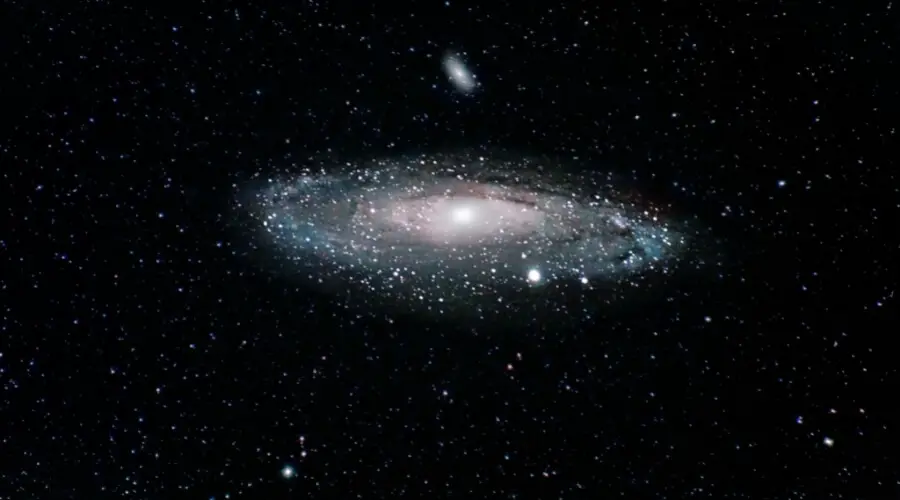The Spiral of a Galaxies the Blue Because
Last Updated on March 19, 2022 by
The spiral and elliptical galaxies are two types of galaxies that astronomers have discovered. They are very different from each other because they look so much different, orbit stars differently, and come in many variations. The differences between the two galaxies will be discussed below.
Galaxies are mysterious objects that live in space and scientists still haven't figured out all their secrets yet. However, there is one thing we know for sure about them – they're beautiful! Today's blog post will discuss the features of spiral galaxies as opposed to elliptical ones. Let's get started now.
Spiral galaxies are characterized by their flat disk shape and the presence of spiral arms. These arms are associated with areas of intense star formation, meaning that in spiral galaxies you will find young stars in abundance. They have an active galactic nucleus at their core which is thought to be a supermassive black hole surrounded by a dense accretion disc full of gas and dust. The high density of material surrounding this black hole emits intense radiation, which can vary over time leading to some very interesting phenomena for astronomers to study! Elliptical galaxies on the other hand do not contain these spiral arms; instead, they appear smooth or lumpy (lenticular) depending on whether there is more matter towards the center or if it's spread out evenly across its surface.
In the universe, galaxies are classified as spirals or ellipticals. These categories are determined by how these galaxies look from Earth's perspective and what they appear to be made of. Spirals have a central bulge surrounded by a flat disk, while elliptical galaxies have no apparent structure other than bright points in their centers.
Comparison Between Spiral And Elliptical Galaxies
| Parameters of Comparison | Spiral | galaxies |
| Contain | Spiral galaxies have a rotating disk of stars and gas | while elliptical galaxies do not |
| Arms | Spiral arms are often sites of star formation | elliptical galaxies don't show evidence of star formation |
| Dusty | Dustier | Less dusty |
| Way | The Milky Way is an example of a spiral galaxy | while the Andromeda Galaxy is an example of an elliptical galaxy |
What Are Spiral Galaxies?

Galaxies are huge, spinning islands containing billions of stars. They are thought to be rotating disks that have a flattened shape and an axis. Spiral galaxies are the most common type of galaxy in our universe, with two other types being elliptical and irregular galaxies. Astronomers believe these spiral shapes form when gravity forces gas to condense into dense clouds which then create new stars. There are three things one can notice about spiral galaxies: their arms or "spiral" pattern, the central bulge where all the old stars reside, and how they rotate around this central region called a "bar".
Spiral galaxies are a type of galaxy in which the stars and other matter rotate around its center, creating an effect that resembles a rotating pinwheel. This phenomenon is since most spiral galaxies have several arms coming from their central hub. These arms contain gas, dust, and new stars formed at a rapid rate. The strong gravitational pull created by these arms can also trap objects such as planets within them. In this way, spiral galaxies resemble giant pinwheels spinning through space with bright centers surrounded by wispy bands of a light-emitting material.
Spiral galaxies are galaxies that have a spiral shape. These types of galaxies usually consist of young stars and interstellar gas, which is what gives them the structure they need to form their spirals. The arms in these types of galaxies rotate around the center much like how hurricanes rotate around its eye. Although two-thirds of all known galaxies belong to this category, there are still many unanswered questions about them such as why they take on this particular structure or how do they form in the first place? To answer these questions scientists use telescopes that can capture images at different wavelengths so that we can see through dust clouds where new stars are born along with black holes for example. Scientists also study nearby spiral galaxies to understand more about distant.
What Are Elliptical Galaxies?

Elliptical galaxies are known for their oval or elliptical shape. They are usually much larger than spiral galaxies and have few young stars. Because of this, they tend to be blue, which is indicative of the presence of older stars. Another thing that makes them different from spiral galaxies is their lack of gas and dust clouds. These features make it difficult to determine how elliptical galaxies formed over time since there is little information available on them at the moment. However, theories suggest that these types of galaxies were once just like any other galaxy but evolved into what they are today because gravitational forces caused many cosmic bodies to collide with each other until one large object was created out of all those smaller objects together. This theory has been accepted by scientists.
Elliptical galaxies are defined as galaxies that do not have a disk or spiral arms. They are shaped like an ellipse, hence the name. A large fraction of all known galaxies belong to this class, including most of the largest ones in the Universe (see also: List of largest known stars). Elliptical galaxies range in shape from spherical to highly flat and elongated shapes with extremely high aspect ratios (length-to-width ratio approaching 1000), which means that they can be several times longer than their widths. Although ellipticals appear similar to lenticular and spiral galaxies due to their galactic disks, ellipticals lack both these features; instead, they consist almost entirely of starlit galactic nuclei embedded in surrounding dark matter haloes.
10 Differences Between Spiral And Elliptical Galaxies
Contain: Spiral galaxies are rotating disks of stars, gas, and dust that contain spiral arms.
Structure: Elliptical galaxies don't have any visible structure or shape to them; they're just large groups of stars.
Rotate: Spiral galaxies rotate in a disk-like pattern around their center.
Move: Elliptical galaxies move randomly throughout space with no set pattern.
Widely: Spiral arm patterns can vary widely from galaxy to galaxy; some may be tightly wound while others may be more loose and wavy.
Size: The size of an elliptical galaxy is much larger than the size of a spiral galaxy because it has so many more stars than spirals do.
Arm: Spiral galaxies have arms that curve in a spiral shape.
Centre: Spiral galaxies rotate around the center while elliptical do not.
Bigger: The central bulge of an elliptical galaxy is bigger than the one in a spiral galaxy.
Interesting Statistics Or Facts Of Spiral Galaxies
1. Spiral galaxies are one of the most common types of galaxies.
2. There are two main categories for spiral galaxies – barred and unbarred.
3. The Milky Way is a barred spiral galaxy, while Andromeda is an unbarred one.
4. One interesting fact about spiral galaxies is that they have been observed to be rotating in either a clockwise or counterclockwise direction.
5. Another interesting fact about spiral galaxies is that they can be classified as either open or closed based on their shape.
6. Open spirals have arms that extend outward from the center, while closed ones form a circle around them.
7. Spiral galaxies are large and contain billions of stars.
8. The Milky Way is a spiral galaxy.
9. There are an estimated 2 trillion galaxies in the universe.
10. The Milky Way has four arms that extend from the central core, with each arm containing at least 10 million stars.
Interesting Statistics Or Facts Of Elliptical Galaxies
1. Elliptical galaxies are the most common type of galaxy in the universe.
2. The Milky Way is an example of an elliptical galaxy.
3. They have a round shape and contain mostly older stars with little gas or dust.
4. Ellipticals are more likely to be found at the center of large clusters of galaxies than spiral galaxies.
5. There are only about 50 known examples of elliptical galaxies that have active star formation.
6. Most ellipticals are smaller than our own Milky Way, but some can be as big as 15 times their size.
7. There are up to 12 billion stars in the Milky Way.
8. If you were able to travel at the speed of light, it would take 100,000 years for you to reach the edge of our galaxy.
9. It takes 250 million years for a star to form from gas and dust.
10. There are about 200-400 billion galaxies in the universe that we know about right now.
Conclusion About The Differences Between Spiral And Elliptical Galaxies
The difference between spiral and elliptical galaxies is something that many people are not aware of. Understanding the differences in these two types of galaxies can be helpful when it comes to understanding how they form, what shape they take, and their life cycle. There are a few key points we want you to know about each type before deciding which one might suit your needs better. First off, an ellipse galaxy has a rounder appearance versus a more flat look for a spiral galaxy like our Milky Way Galaxy. Elliptical galaxies also have less mass than spirals because there isn't as much heavy material within them. Lastly, when looking at the lifespan of both shapes, it's been determined that most ellipticals will last longer.
The two types of galaxies are very different. Spiral galaxies have round arms that give them their signature look, while elliptical galaxies are more oval-shaped and asymmetric in appearance. They also differ in their star formation rates – for example, there is much less gas available to form new stars inside an elliptical galaxy than a spiral galaxy with its many layers of hydrogen clouds at varying distances from the galactic center. Despite these differences, both types play important roles in our Universe.
References:
Resource 01: https://www.space.com/22382-spiral-galaxy.html
Resource 02: https://en.wikipedia.org/wiki/Elliptical_galaxy
Source: https://questionscity.com/spiral-vs-elliptical-galaxies-2/
0 Response to "The Spiral of a Galaxies the Blue Because"
Postar um comentário